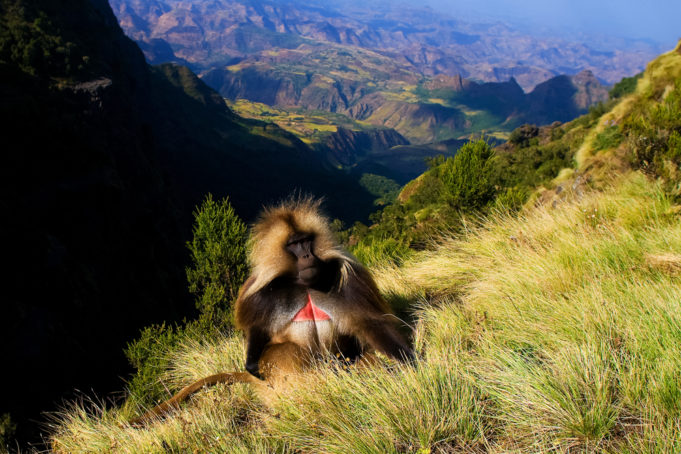When a friend sent us a link for a guidebook on Ethiopia’s Simien Mountain National Park, we could hardly contain our excitement. The 44-page PDF described a place that we never knew existed, a side of northern Africa that has all but disappeared. The Simien Mountain National Park is a 50 square mile stretch of land that is home to rare Ethiopian wolves, walia ibex, and gelada (red-breasted baboons) as well as hundreds of other species of animals and plants. Campgrounds are stationed between rolling hills and patches of pine trees and visitors are encouraged to trek with local guides for an experience that is said to be spectacular. Cultural immersion is also provided as visitors are given the opportunity to respectfully mingle with locals in nearby villages.
The guidebook painted a delightful picture of what to expect when visiting the park: While trekking, you will be treated to magnificent views of the famous Simien escarpments as you travel through the Afroalpine habitat. Wildlife includes the walia ibex, which is found nowhere else in the world, the iconic Ethiopian wolf and the gelada as well as a wealth of bird species. Following the rewarding experience of the highland routes, the trip then takes you on a more off-the-beaten-track route to the lowland parts of the park through the villages of Mekarebya, Mulit and Adi Arkay. This route also gives you a chance to see the other side of the highland scenery with the opportunity to mingle with local people and discover their ways of life. (For a detailed illustration of one person’s experience in this park, check out the blog Desert to Jungle.)
Although the park was formally established in 1966, the land has been managed since 1944. According to Eliza Richman and Biniyam Admassu, the authors of the Simien Mountain National Park Guidebook, “The area was then a royal hunting ground and when the Department of Forestry was established that year, conservation efforts focused on the regulation of game hunting. However, as hunting increased and the growing population put increasing pressure on land and resource use, it became apparent that wildlife conservation areas such as the Simien Mountains needed to be formally established to conserve these precious resources.”
With help from a strengthening economy and efforts in ecotourism, the park has increased its borders and established conservation and social justice programs that are working toward sequestering carbon emissions, stabilizing the climate and supplying water to local communities. There is also talk of an eco-lodge that will be built for those who aren’t fond of sleeping in tents or under the stars. Sounds like a great place to visit, right? We thought so too. That’s why we decided to add it to our list of places to investigate and feature as soon as possible.














